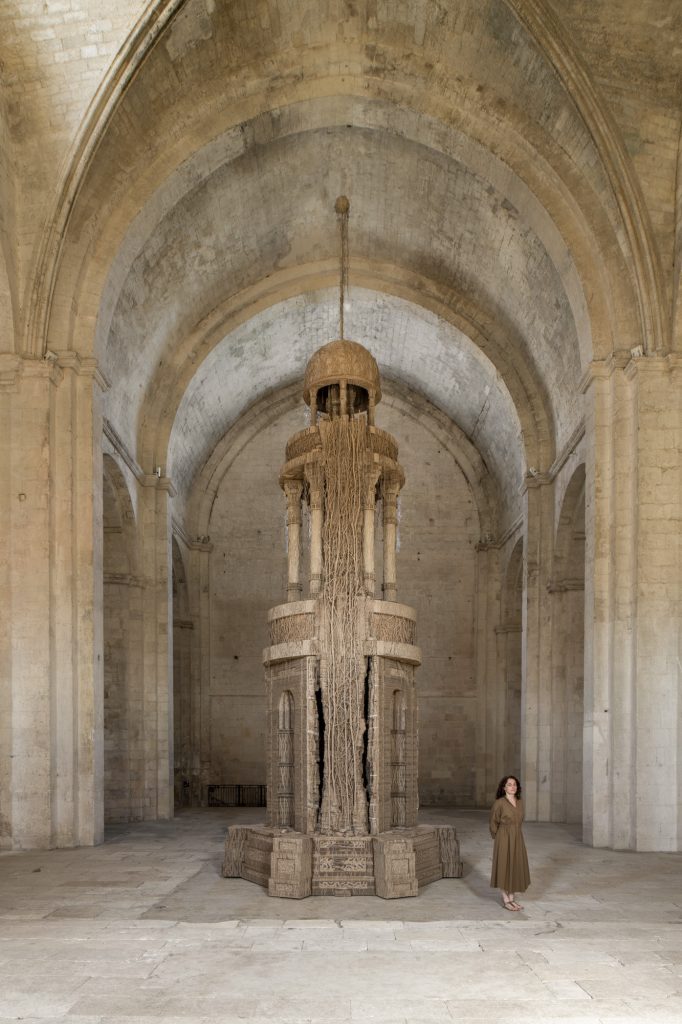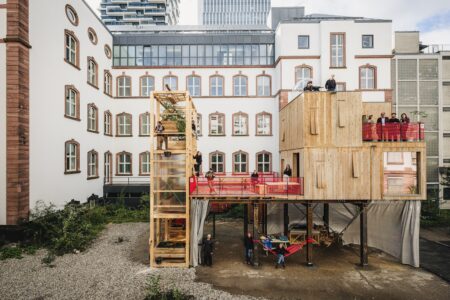Eva Jospin: Dreamworlds
French artist Eva Jospin creates intricate, immersive scenes from the most humble of materials, carving monumental forests and architectural scapes.
Like landscapes from half-forgotten dreams, Eva Jospin creates intricate, immersive scenes from the most humble of materials. The French artist works predominantly with cardboard to make monumental forests and architectural scapes. Harkening back to myths and fairy tales, each piece is worked to a depth and elaborate level of detail that creates a duality of scale and layered perception. TLmag speaks with Jospin about the universal influence of the forest in cultural mythologies and human life, and the beauty of repeating oneself.
TLmag: Where does your interest in making things come from?
Eva Jospin (EJ): I think it started very young. When I was a little girl I wanted to be a painter, and I would draw a lot. The idea of creating artificial words was always there; it’s a fantasy that comes from childhood and never ends. I studied architecture for one year after high school, which helped me choose to go to Beaux-Arts de Paris. I understood that I couldn’t compromise between doing stage design or architecture and doing art, which was my real need and intention.
TLmag: What is it about creating on such a large, encompassing scale that you enjoy?
EJ: I think that it comes from when I wanted to work in theatre, where of course the installations are really big. The thing I love the most is to work on a very big scale with a large amount of detail. I really like to mix these two scales, which are usually opposites, and there are two sensations that become more vivid when you see this kind of work. Firstly, you feel surrounded by it, but at the same time you can lose yourself in details. It’s a way to keep the attention of the visitor, because you will never have enough time to fully register everything; there is too much for your eyes to take in. In that sense it’s like the sensation that you have in nature, where you see a big landscape, but you can also lose yourself in the scope of, say, colours in lichen. Every detail is unique, and this is the beauty of the world. You can embrace a large view, and at the same time see that it’s impossible to represent the world in its actual level of detail. I try to create a little bit of this overwhelming sensation in my work.
TLmag: Do you create these details as you go along, or do you always have a plan that you’re working off?
EJ: There is always a general idea, but in the making process a lot of things come through my hands, just like a painter. You have an intention, try something, and if it works well you apply it to future works. It’s the way most artists evolve. Some of my pieces are very precise, and I really work with pieces like puzzles, with a structure inside to hold them together. When I have the base shapes, I’ll work on the surface to change it and add a lot of detail. The cardboard is transformed in different ways: sanding, cutting, making tiny holes, or layering coloured paper inside in a way that is so thin and delicate you can’t even see it.
TLmag: The level of detail your work encapsulates quite a distinct sense of wonder and is incredibly immersive. Do you see it as a form of world building?
EJ: In a way, yes. Everything started from the forest, and from the idea of the promenade. I want to work with patterns that can be easily recognised. It’s the same with universal architectural forms, like columns. They all have a background of imagination, images and places you have seen, and carry a sense of familiarity. What I want to offer is the idea that you can make a space your own. I don’t have a specific story behind my works because I don’t want to close off any interpretation. I want to leave it open, and if people start making their own dreams and fantasies about it, then I’m very happy with that. For me, the most intriguing works are always the ones that give you some entry points, but leave the rest for you to create.
TLmag: The forest as a motif or part of a mythology stretches across cultures and ages. What does it mean to you? What drew you to this as a subject?
EJ: Strangely, it’s the thing that I struggle to explain the most. That is probably why it’s such an obsession. There’s still something really mysterious about it to me. The forest is so wide and represents so much: the brain, myth, fairy tales, psychoanalysis, among others. There’s also the fact that it exists in the air and in the ground at the same time. Half of the forest is unseen because it’s underground, and we as humans are only here because plants and trees allow us to breathe. If you think of the forest this way, it’s like opening one door after another in an infinite spectrum of influence that it has on the spread of human life and cultures.
TLmag: How does material influence the way you work? For instance, your pieces for Dior were embroidered, and Forêt Palatine is made of cardboard.
EJ: When I started with cardboard I had no idea that I would use it for such a long time, but I realised that this material could express almost all of my ideas. It’s not the only material I use now, because I also work outside, not only inside, and we mould the pieces of cardboard to cast bronze, concrete or plaster. I’m very fascinated by trees and minerals, and like cardboard, these have layers in their construction. They’re separate and united at the same time. When I first started working with cardboard, I liked it for two reasons: firstly, it is a cheap material. Cardboard was like the sculptural equivalent of a pen or a pencil; you don’t need anything to work with it, except for time and your hands. The second reason is that relating to cardboard is really easy, because it’s a simple material that gives a lot of freedom to create with because it doesn’t have the pressure of so many masters or techniques that other materials carry.
TLmag: Is there a connection between your pieces? Or do you prefer to have a clean slate when you begin a project?
EJ: There’s always a relationship. I think before I started working with the forest, I was trying things but I didn’t really find my space. I wanted to make a sort of bridge between the possibility to work very freely across different art forms, which is what the 20th century gave us, and classical influences. I never start with a blank page – I think all of my work is part of the same universe, and it’s just becoming larger. I love to repeat myself and I think there is beauty in revision, so I’m not afraid of it.















